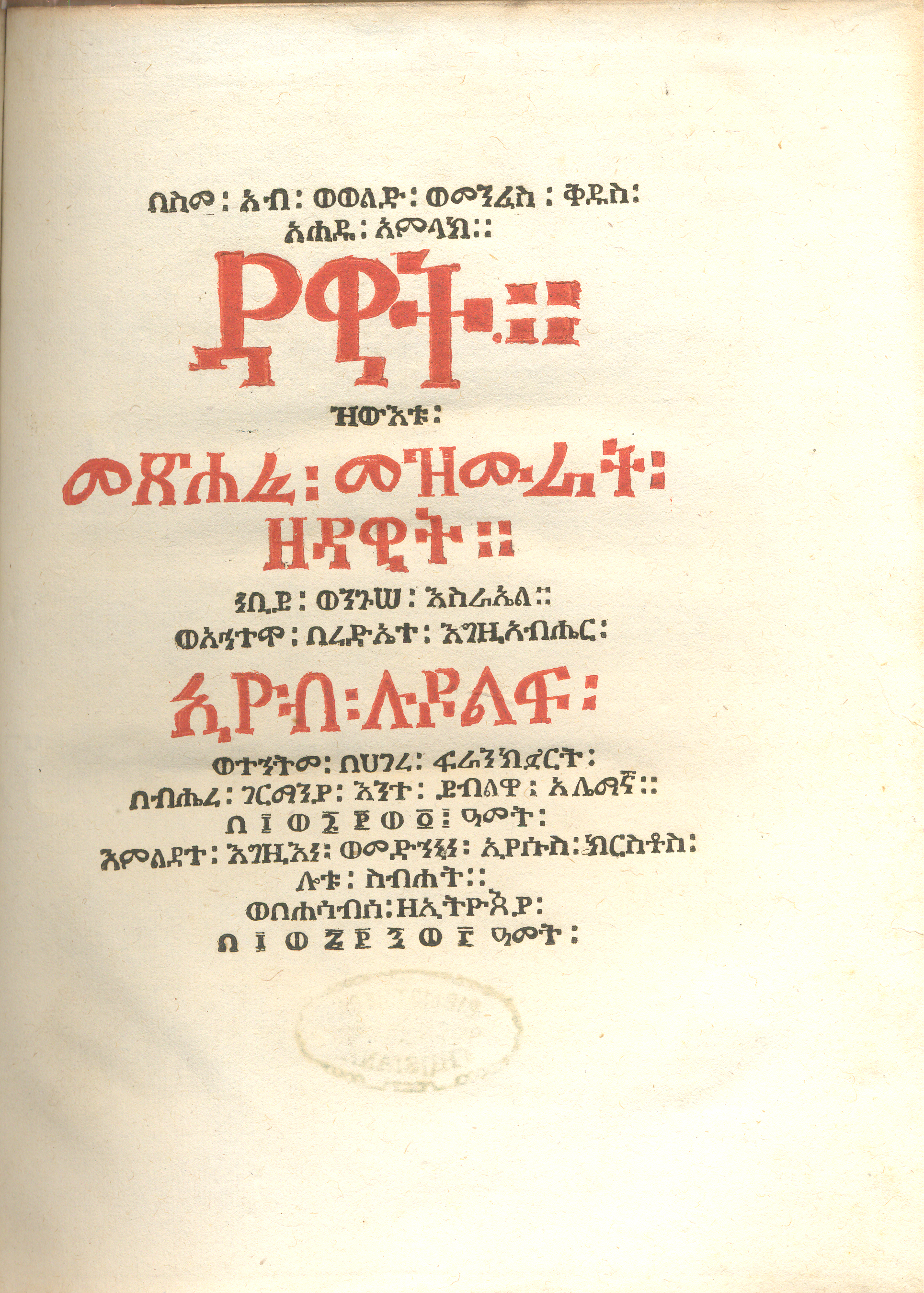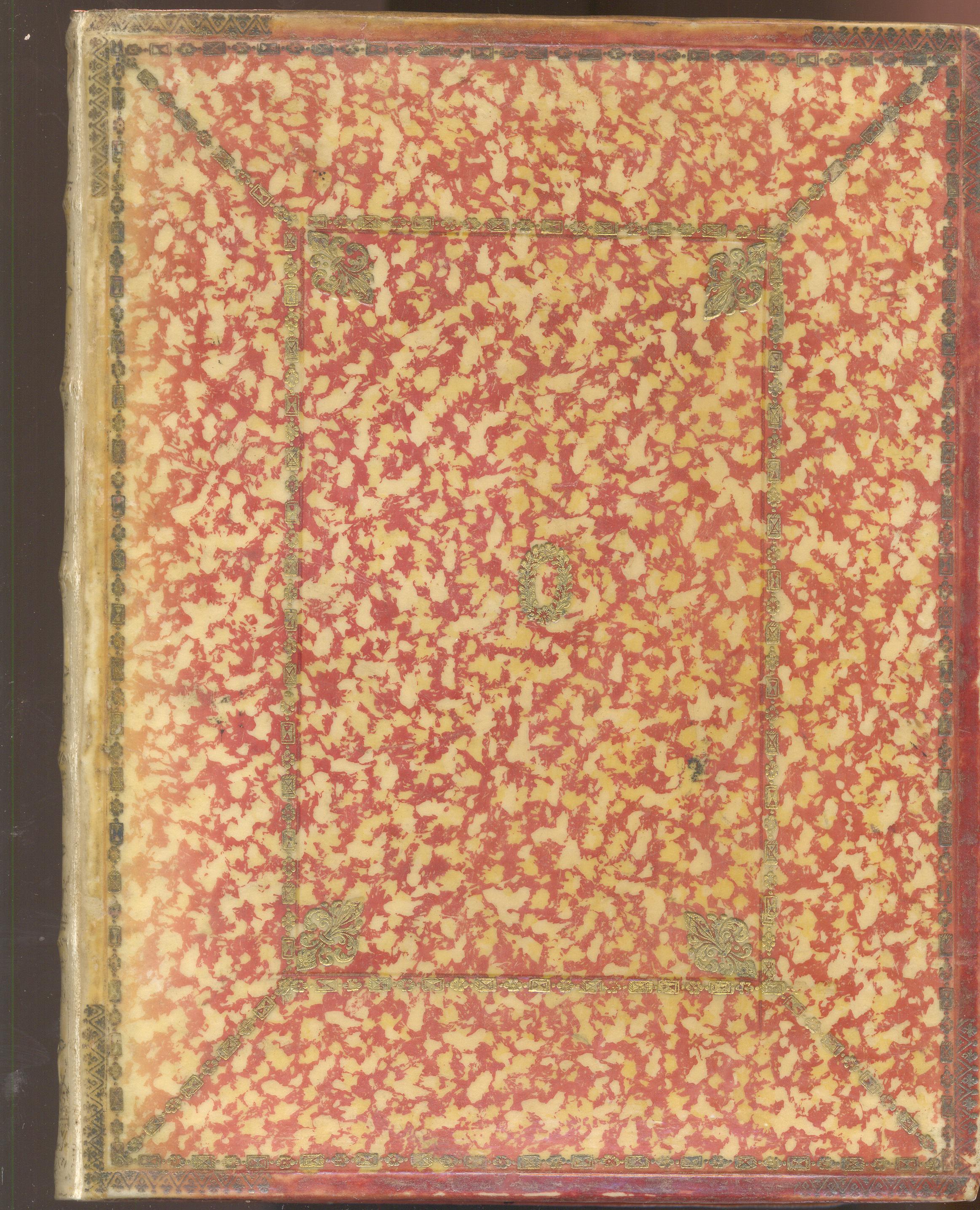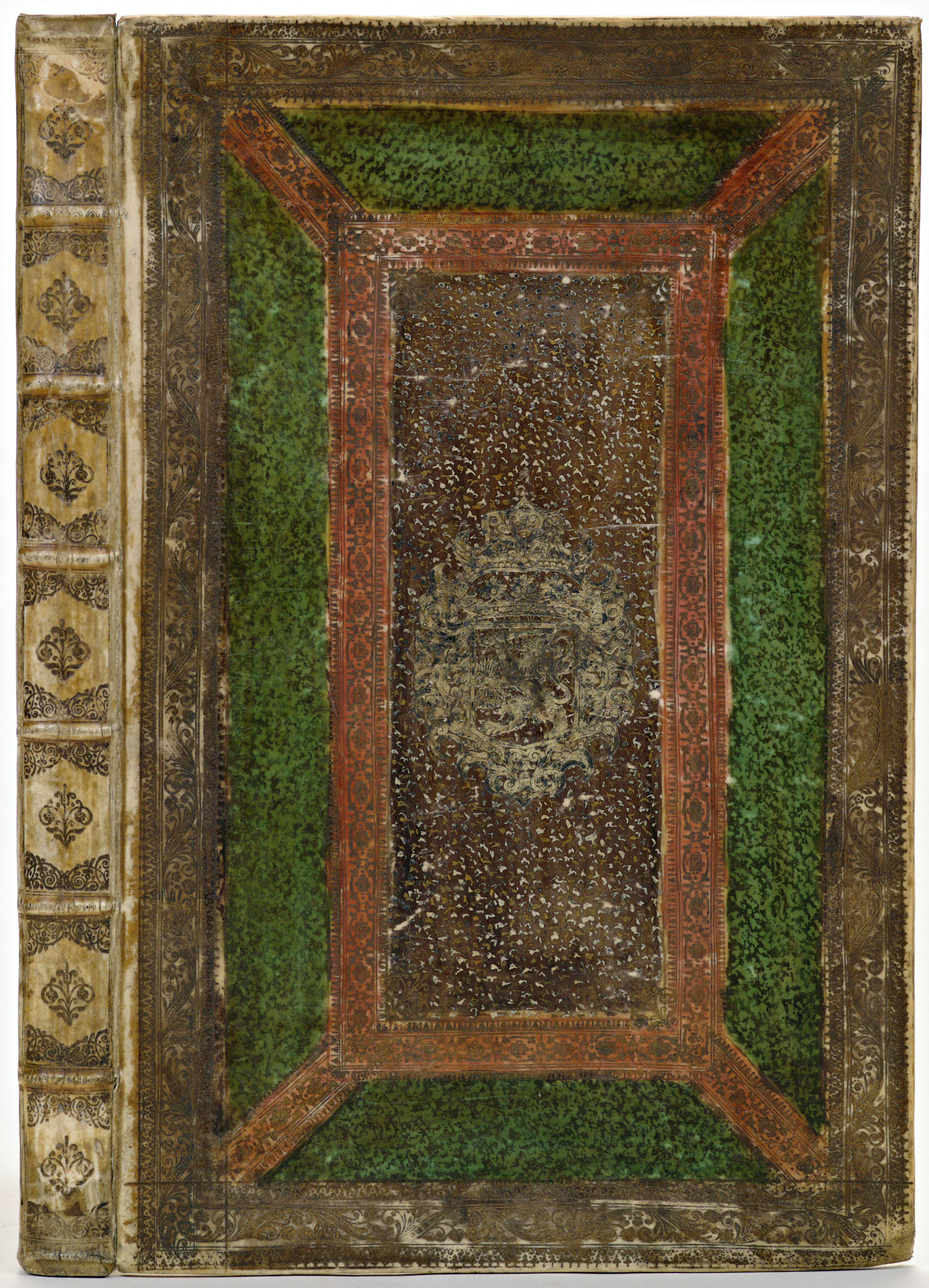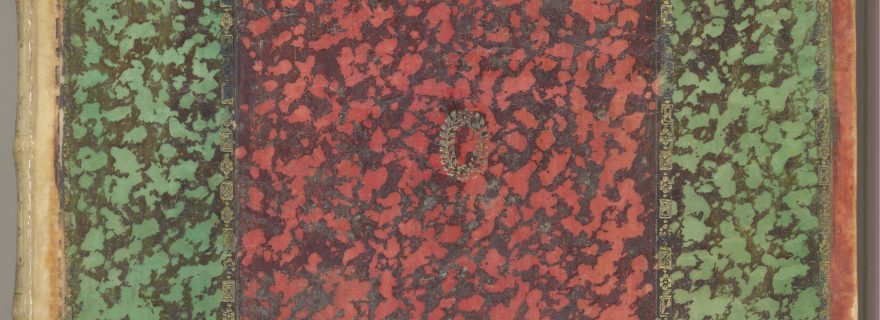Donum I. Ludolfi
Two beautifully decorated bindings donated to Leiden University Library and Bibliotheca Thysiana, as a token of friendship to a deceased travel companion.
In 1681, German Orientalist Job Ludolf (1624-1704) published an in-depth investigation into the history of Ethiopia under the title Historia Aethiopica [...]. In this book, Ludolf paid particular attention to the Ethiopian language, but he also described a number of other aspects. He described some physical features of the country, such as geography and natural resources and some cultural aspects like the church, religion, and economy. In the western world, Ludolf is considered the founder of Ethiopian studies. For a number of years, Ludolf studied in Leiden, during which he boarded with the Professor for Hebrew at that time, Constantin l’Empereur of Opwijck (1595-1637). During his time in Leiden Ludolf befriended Van Opwijck’s nephew, Johannes Thysius (1622-1653). From 1646 to 1648 the two young men travelled France and England on a Grand Tour, which didn’t always go smoothly. Conflict was ever-present during their travels; tensions often ran high. Despite this rocky relationship on the road, their relationship persisted. After Ludolf’s departure from Leiden in November of 1648, Thysius and Ludolf maintained regular correspondence.
Although Thysius died at the young age of 31 in 1653, Ludolf always remembered his travel companion. When Ludolf commissioned the printing of an Ethiopian language version of Psalms I-V of King David at the end of the 17th century (possibly in 1699) under the title Mashafa mazmurāt za-Dāwit, he immediately sent a presentation copy of his work to Bibliotheca Thysiana. This library had been founded in 1655, in memory of his former travel partner at the distinguished Rapenburg canal in Leiden. Leiden University Library, too, received a presentation copy of Ludolf’s work. Extraordinary for a volume that must have had an extremely low circulation. Like the Thysiana, the University Library also received a copy of Ludolf’s later integral Ethiopian-Latin edition of the Psalms (printed in 1701). In order to create this edition, Ludolf used two earlier editions of the Psalms edited by Johannes Potken in 1513 and 1518 respectively, supplemented with three manuscripts that Ludolf edited. Ludolf's donation to the UBL is recorded in the library catalogue of 1716 on page 3.


Hiob Ludolf, Mashafa mazmurāt za-Dāwit. Psalterium Æthiopicum Æthopicè tantūm pro Habessinis Christianis in Æthiopia. [THYSIA 121].
Hiob Ludolf, Mashafa mazmurāt za-Dāwit = hoc est: Psalterium Davidis Aethiopice et Latine cum duobus impressis et tribus MSStis codicibus diligenter collatum et emendatum, nec non variis lectionibus atque notis philologicis illustratum ; accedunt Aethiopice tantum Hymni et orationes aliquot Vet. et Novi Testamenti, item Canticum canticorum, cum variis lectionibus et notis cura Jobi Ludolfi. Johannem David. Zunner, Francurti ad Moenum 1701. [877 C 16].
The presentation copies in the Bibliotheca Thysiana and the University Library show a number of interesting similarities. Because no separate title was printed for the proof, both copies contain a handwritten title: Psalterium Æthiopicum Æthopicè tantūm pro Habessinis Christianis in Æthiopia, possibly written by Ludolf himself. The similarities also extend to the decorations on both volumes. Both copies are bound in marbled parchment created by the application of acids. After this process, hand-coloured and gold-tooled floral and diamond-shaped decorations were applied. A laurel wreath in gold is placed centrally on the boards, the corners are decorated with a zigzag decoration in gold. Additionally, both copies have gilded fore-edges. One obvious differentiating feature was applied in the colouring of the parchment: Green and red for Thysiana’s copy, and red and yellow for the copy presented to the University Library. These are extremely rare bindings from the beginning of the eighteenth century, of which I have not yet found another example.
Ludolf’s gifts indicate how much he appreciated his student years at Leiden University and his enduring fondness for his old friend Thysius.

Marbled parchment binding, hand-coloured in green and red. Gold tooling of floral and diamond-shaped decoration, central laurel wreath, corners with a zigzag motif; edges gilt.

Marbled parchment binding, hand-coloured in red and yellow. Gold tooling of floral and diamond-shaped decoration, central laurel wreath, corners with a zigzag motif; edges gilt and original marbled endpapers (which are probably removed from THYSIA 122 in the process of restoration of the binding)
EDIT:
In the holdings of the National Library of the Netherlands (KB) in The Hague, there are two book bindings that are somewhat reminiscent of the depicted bindings above from the Bibliotheca Thysiana and Leiden University Library. Especially the bindings of Iob Ludolf’s Historia Aethiopica […], Francofurti ad Moenum, Joh. David Zunner from 1681 in the KB has a number of similarities in decoration and colouring (see picture below). Rens Top, the curator for bookbindings at the National Library, has not yet had the opportunity to have a good look at the copy in the KB and adds that the description of the binding in the KB catalogue as ‘painted, marbled and coloured’, deserves more detail. Further research has to point out whether the KB copy was a presentation copy as well, and to whom it was presented. According to the coat of arms on the binding, this copy might have been presented to the governors of the Dutch Republic. The Leiden copy of Ludolf’s Historia Aethiopica [412 A 9] holds a handwritten dedication by Ludolf to the curators of the library, dated August 1699, but is unfortunately bound in a plain calf binding.



